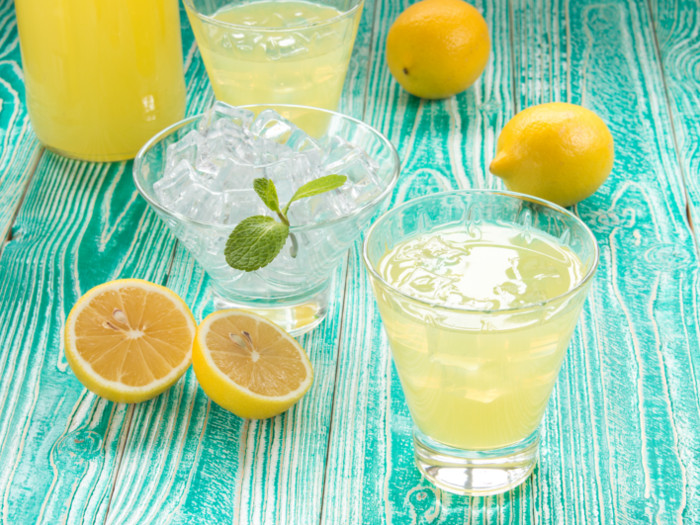Limoncello is a sweet and unique liquor that isn’t on every menu but is a delightful treat when you can find it.
What is Limoncello?
Limoncello is a popular Italian liquor made from lemon zest and alcohol. It is a favorite of home liquor enthusiasts because it is easy to make and quite useful for cooking. The ABV of this alcohol varies, especially among home recipes, but most limoncello is roughly 25%. It is traditionally served chilled as an after-dinner digestif. It is also very popular as a cocktail mixer. [1]

Limoncello is served well-chilled in the summer months as an after-dinner drink. Photo Credit: Shutterstock
Nutrition Facts
A 1.5 oz serving of limoncello contains on average 155 calories, 17 grams of carbs, and 16 grams of sugar.
How to Make Limoncello?
It’s fairly simple to make limoncello at home. However, please exercise caution on the intake of alcohol as excessive consumption can lead to fatal diseases like cancer and liver cirrhosis. Keeping that in mind, let’s take a look at the recipe for limoncello below.

Refreshing Limoncello Recipe
Ingredients
- 2 pounds of organic lemons
- 1 liter of water
- 2 pounds of sugar
- 1 gallon of grain alcohol (of your choice)
Instructions
- To make limoncello, wash and peel two pounds of organic lemons.
- Ensure that you remove as much of the white pith (the spongy white tissue lining the rind of oranges, lemons, and other citrus fruits) as possible, to avoid bitterness.
- Next, put the lemon peels in a one-gallon glass container with 1 gallon of your choice of grain alcohol. Most people use grappa or vodka.
- Close the jar, and let it sit for 10-14 days, giving it a good shake once a day.
- When the alcohol turns yellow, strain out the lemon peel.
- Make a simple syrup using 1 liter of water and two pounds of sugar by dissolving over low heat.
- Add simple syrup to the alcohol and mix. Finally, Chill the limoncello in the fridge or freezer for at least 4 hours before drinking.
Notes
How to Store?
This drink should be kept as cold as possible in tightly sealed containers. It is okay to store your limoncello in the freezer, as the alcohol will not freeze if it is of a high enough proof, and it will also help prolong the liquor’s shelf life.
Side Effects
Using high-proof alcohol will help keep your drink bacteria-free, but tread carefully when you take your first drink. Limoncello is sweet but deceptively strong, and as with all alcohol, moderation is strongly suggested to avoid any unwanted side effects of hangovers. Also, many brands have a high amount of added sugar in them.
Adverse risks associated with alcohol consumption: Alcohol intake, if done in an excessive manner, can lead to short-term health risks such as violence and injuries as well as long-term health risks such as addiction, alcohol abuse, and chronic diseases. Laws, rules, and regulations regarding alcohol consumption and purchase vary in different countries. According to the Centers for Disease Control and Prevention in the US, people who should not drink alcohol include women who are pregnant, individuals younger than 21 years of age, and people who are recovering from alcoholism or cannot control the amount they drink. Also, it should be avoided by people who are planning to drive or any other activity that required focus and skill. [2] [3]
